Think gardening is all about beauty, not bugs? You might be inviting pests without even knowing it. Simple slip-ups, like overwatering your plants by more than 1-2 inches weekly, can turn your yard into a pest paradise. Neglecting fallen leaves or debris, especially after a weekend trim, offers critters a cozy hideout. Want to keep your garden safe? Stick around for tips to outsmart those sneaky invaders.
Contents
Overwatering Plants
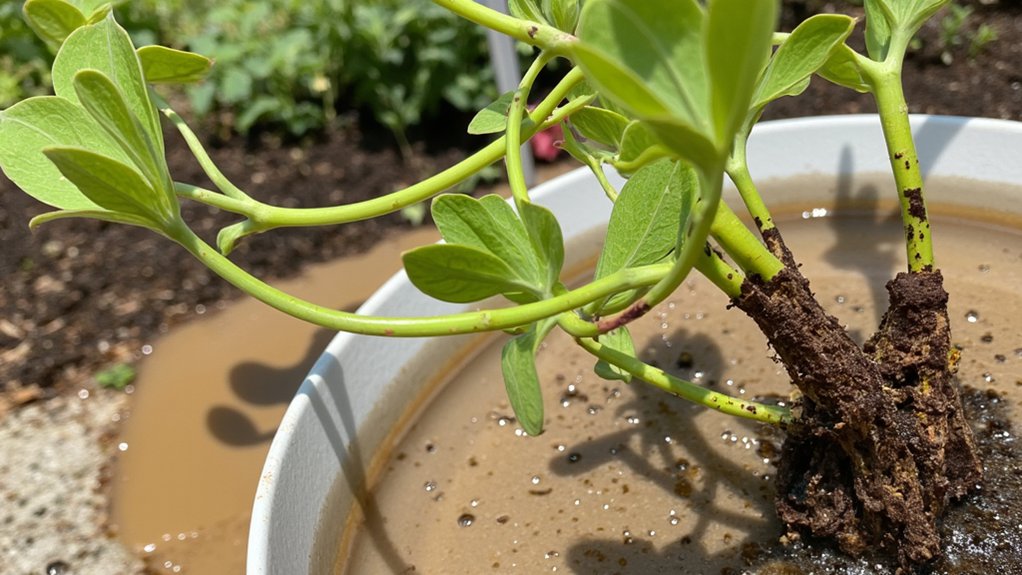
While you might think more water means happier plants, overwatering is a surefire way to invite bugs into your garden. You’re creating a damp haven, perfect for pests like fungus gnats and mosquitoes. Excess moisture weakens roots, stressing plants and making them easy targets.
Check your soil before watering; stick your finger in about 2 inches deep. If it’s still moist, hold off for a day or two. Most plants need watering only when the top inch dries out, roughly every 3-5 days, depending on weather.
Don’t let water pool around pots or beds, as it’s a bug magnet. Use well-draining soil, and empty saucers under containers within 30 minutes of watering. Keep that balance, and you’ll dodge the pest party!
Neglecting Garden Cleanup
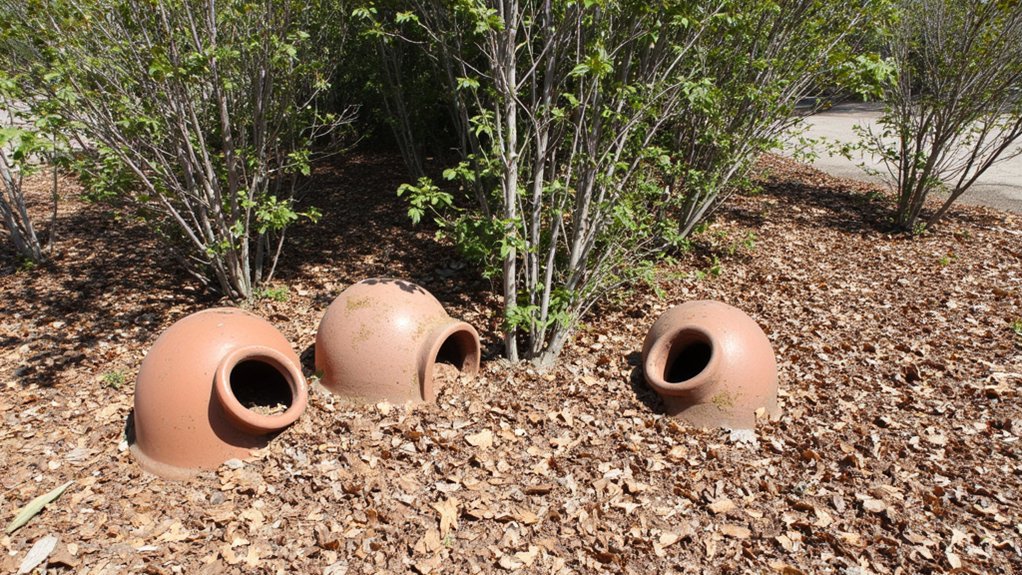
If you’re skipping garden cleanup, you’re practically rolling out a welcome mat for bugs. Fallen leaves, dead plants, and debris aren’t just messy; they’re perfect hiding spots for pests like slugs and beetles. Don’t let clutter pile up, or you’ll regret it come spring.
Start by clearing out dead foliage every two weeks, especially after heavy rain. Use a rake to gather leaves into piles, then bag them within a day to avoid damp, bug-friendly heaps. Check under pots and stones for hidden critters, too.
Lastly, trim back overgrown branches—aim for cuts within 6 inches of the main stem. Dispose of trimmings immediately; don’t leave them lying around. A tidy garden isn’t just pretty, it’s a pest deterrent.
Planting Invasive Species
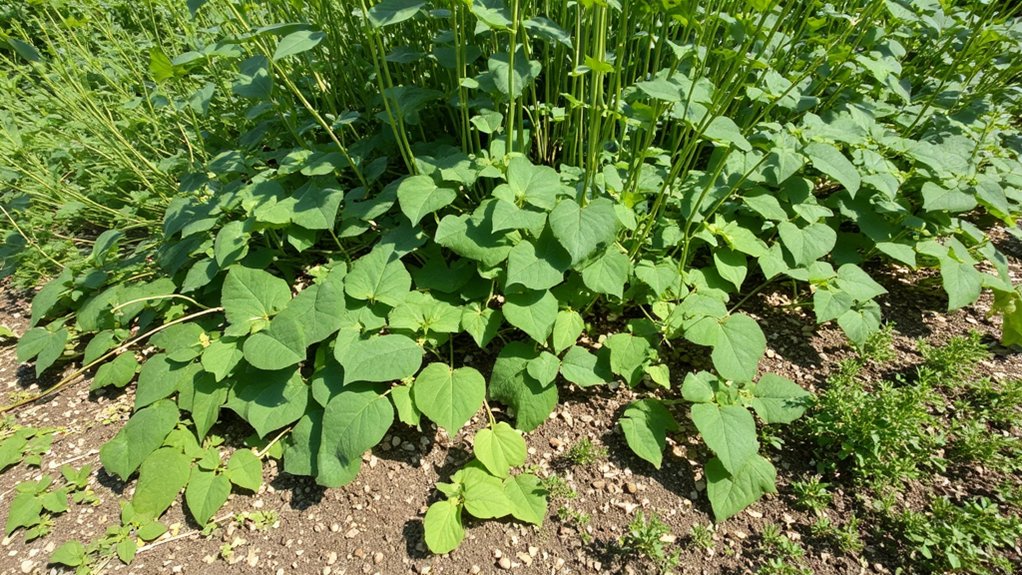
As you plan your garden, beware of planting invasive species that can turn into a bug magnet. These plants, like kudzu or Japanese knotweed, spread fast, often growing over 3 feet in a single season. They choke out native flora, creating dense, shady patches bugs adore.
Don’t just grab any pretty plant at the nursery. Research first, checking if it’s invasive in your area—use your local extension service for a list. If you’ve already got one, act quick; dig it out, roots and all, before it spreads further. Bag the debris, don’t compost it, to avoid regrowth.
Stick to native species instead. They’re better suited to your ecosystem, naturally resisting pests without extra effort on your part.
Ignoring Pest-Repellent Plants

Hey, let’s shift gears from invasive plants to another garden misstep. You’re likely ignoring pest-repellent plants, and that’s a big oversight. These natural defenders can keep bugs at bay without chemicals.
Start by planting marigolds; their strong scent repels aphids and mosquitoes. Tuck them around your vegetable beds, spacing them 8-12 inches apart for best coverage. Next, consider lavender—its fragrance deters moths and fleas. Place it near entry points, like garden edges, in full sun.
Don’t forget basil, which wards off flies and mosquitoes. Plant it in pots or beds, 10 inches apart, and pinch back leaves weekly to encourage growth. By adding these plants, you’re building a barrier. So, get planting, and watch those pests steer clear!
Choosing Bug-Attracting Flowers
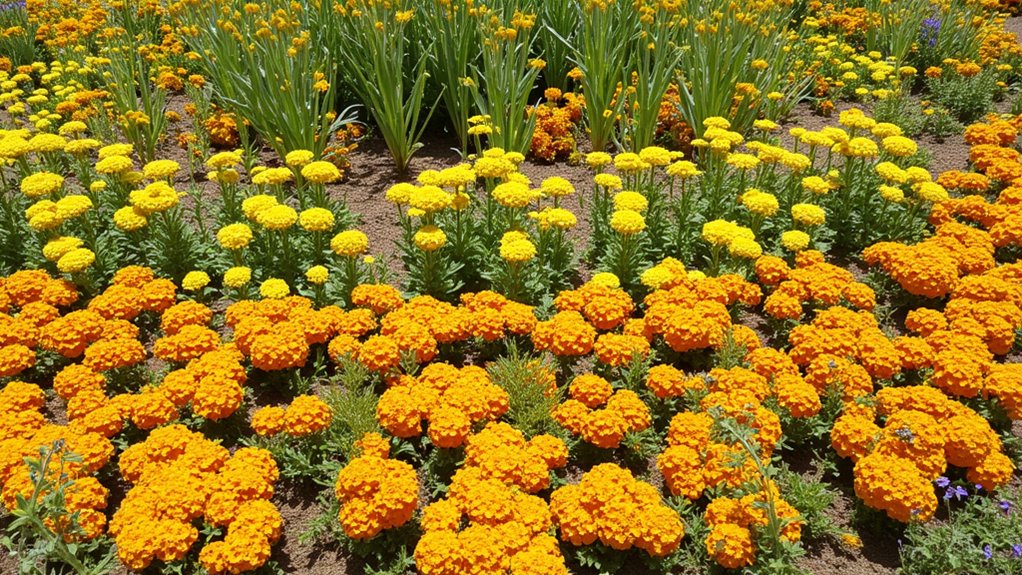
Ever wonder why your garden’s buzzing with more bugs than a picnic? You might be planting flowers that practically scream “come eat!” to pests. Certain blooms, like marigolds or sunflowers, attract aphids and beetles with their bright colors and sweet nectar. You’re basically rolling out a welcome mat!
Take a close look at your flower choices, and avoid overdoing it with bug magnets. Instead, mix in some less appealing plants, like lavender, which bugs tend to skip. When planning your garden, research flower types—check online or at a nursery for pest-prone lists. Swap out half of your bug-attracting flowers within a month, spacing new plants at least 12 inches apart. You’ll see fewer uninvited guests soon!
Using Sweet-Smelling Fertilizers
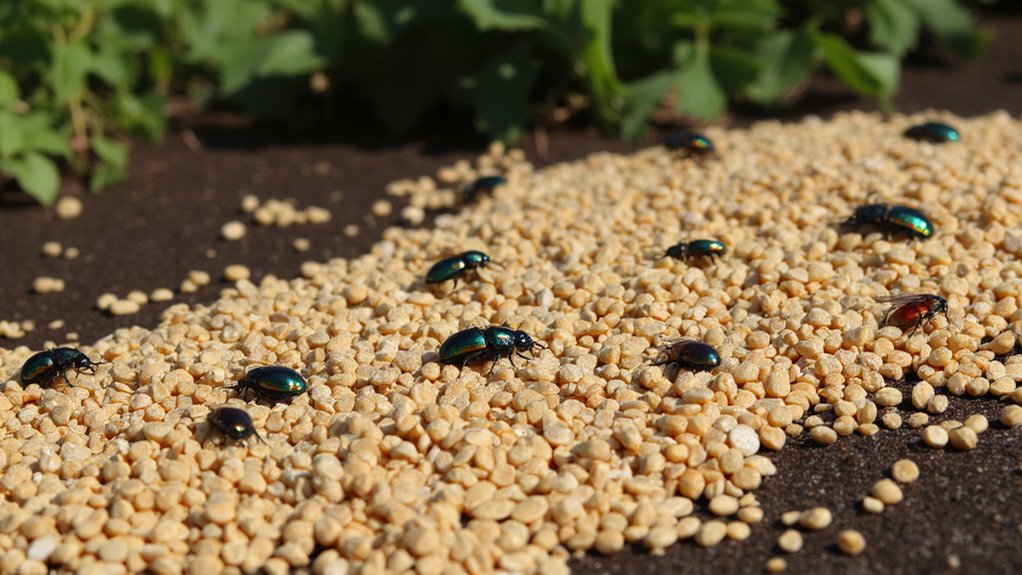
While you’re tending your garden, those sweet-smelling fertilizers might be doing more harm than good. They often lure bugs, like flies and beetles, with their sugary scent. You’re basically setting out a buffet for pests!
Switch to low-odor or slow-release fertilizers to cut down on attraction. Look for products labeled as “low-scent” or “nitrogen-based,” and apply them sparingly, no more than 1 tablespoon per square foot. Mix it into the soil immediately, within 5 minutes, to mask any lingering smell.
Don’t let that sweet stuff sit on the surface, tempting critters. Check your plants weekly for unusual bug activity, especially after fertilizing. If you spot pests, rinse the area with water, about 1 gallon per 10 square feet, to dilute the scent fast.
Overusing Mulch
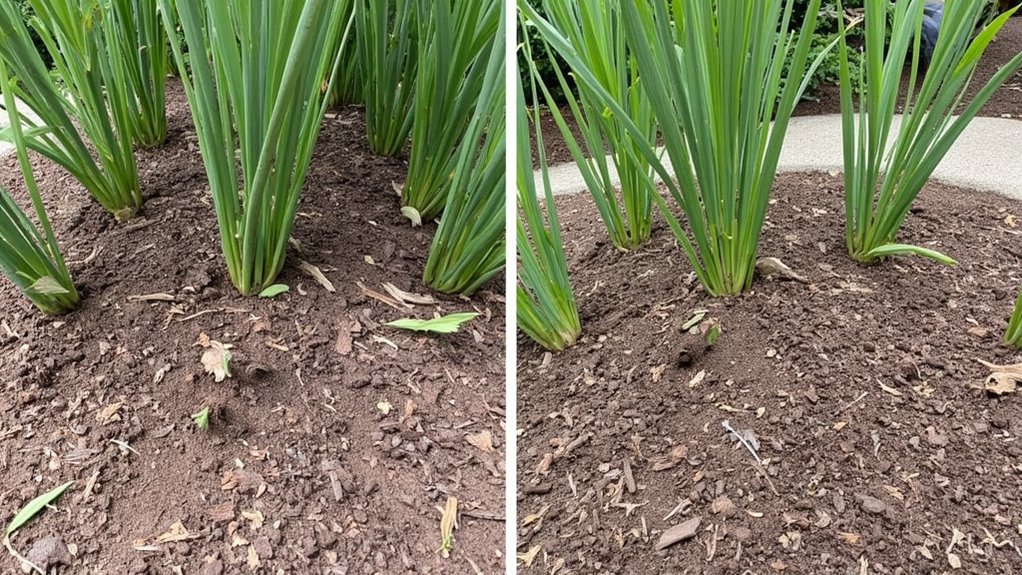
As, let’s talk about overusing mulch in your garden, a common slip-up that can invite bugs. You might think piling on mulch keeps weeds down, but too much creates a pest paradise. Excess layers, especially over 3 inches deep, trap moisture and provide hiding spots for insects like slugs, earwigs, and termites.
Here’s the fix: limit mulch to a 2-3 inch layer, and don’t let it touch plant stems. Pull it back about 2 inches from the base to avoid rot and pest nesting. Check it monthly, renewing only if it’s thinner than 2 inches. Also, use coarse mulch, like bark chips, since fine mulch decomposes faster, attracting bugs. Stick to these rules, and you’ll keep those critters at bay.
Skipping Crop Rotation

Let’s plunge into skipping crop rotation, a sneaky mistake that can turn your garden into bug central. You might think planting the same crop yearly is fine, but it’s a pest magnet. Bugs that love specific plants, like tomato hornworms, build up in the soil over time.
When you skip rotating crops, you’re basically rolling out the welcome mat for these critters. Rotate your plants every 2-3 years, switching between unrelated families—like tomatoes to beans to cabbage. This breaks the pest cycle, starving them out before they multiply.
Leaving Fallen Fruit
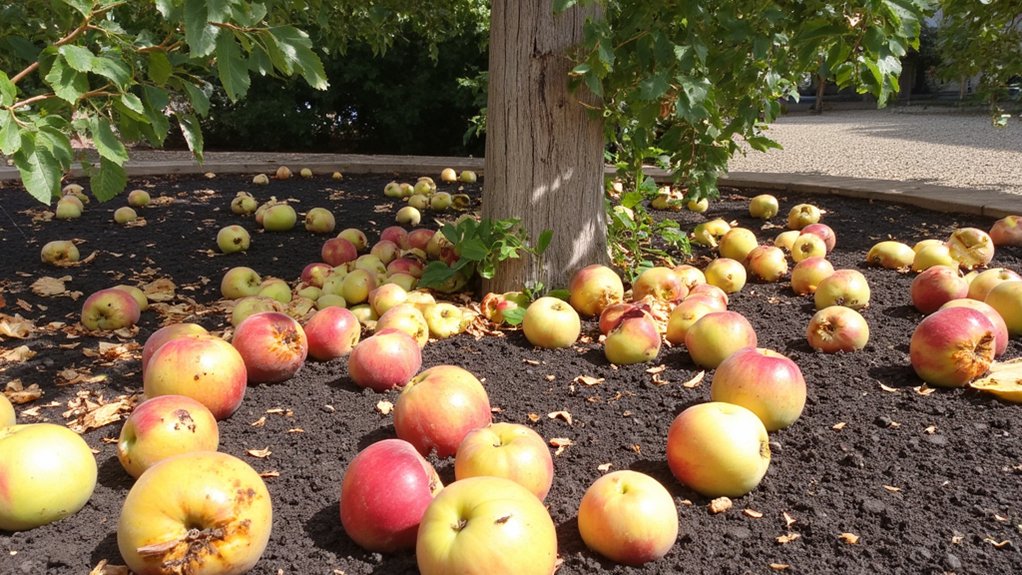
Moving from crop rotation slip-ups, consider another garden blunder: leaving fallen fruit lying around. You’re basically rolling out a welcome mat for pests. Fruit flies, ants, and beetles can’t resist the sweet, rotting mess, and they’ll invade fast.
When apples or peaches drop, don’t wait—pick them up within 24 hours. Check your garden daily, especially under fruit trees, and collect anything on the ground. Use a small bucket or bag, then dispose of it in a sealed compost bin or trash, at least 50 feet from your garden. This cuts off the food source.
If you’ve got too much, share extras with neighbors or livestock. Just don’t let it sit. Quick action keeps bugs from turning your yard into their buffet.
Stagnant Water Sources

Take a hard look at your garden for stagnant water sources, because they’re a magnet for bugs. Mosquitoes, gnats, and other pests breed in standing water, thriving in just a quarter-inch of it. Don’t let them turn your yard into a nursery!
Check birdbaths, empty pots, or clogged gutters for pooled water. If you’ve got a birdbath, refresh the water every 2-3 days to stop larvae from hatching. For pots, drill drainage holes or tip them over after rain.
Also, inspect low spots in your lawn where water collects after a storm. Fill these with soil, or redirect runoff with a simple trench. Keep things dry, and you’ll cut down on buggy visitors without much hassle.
